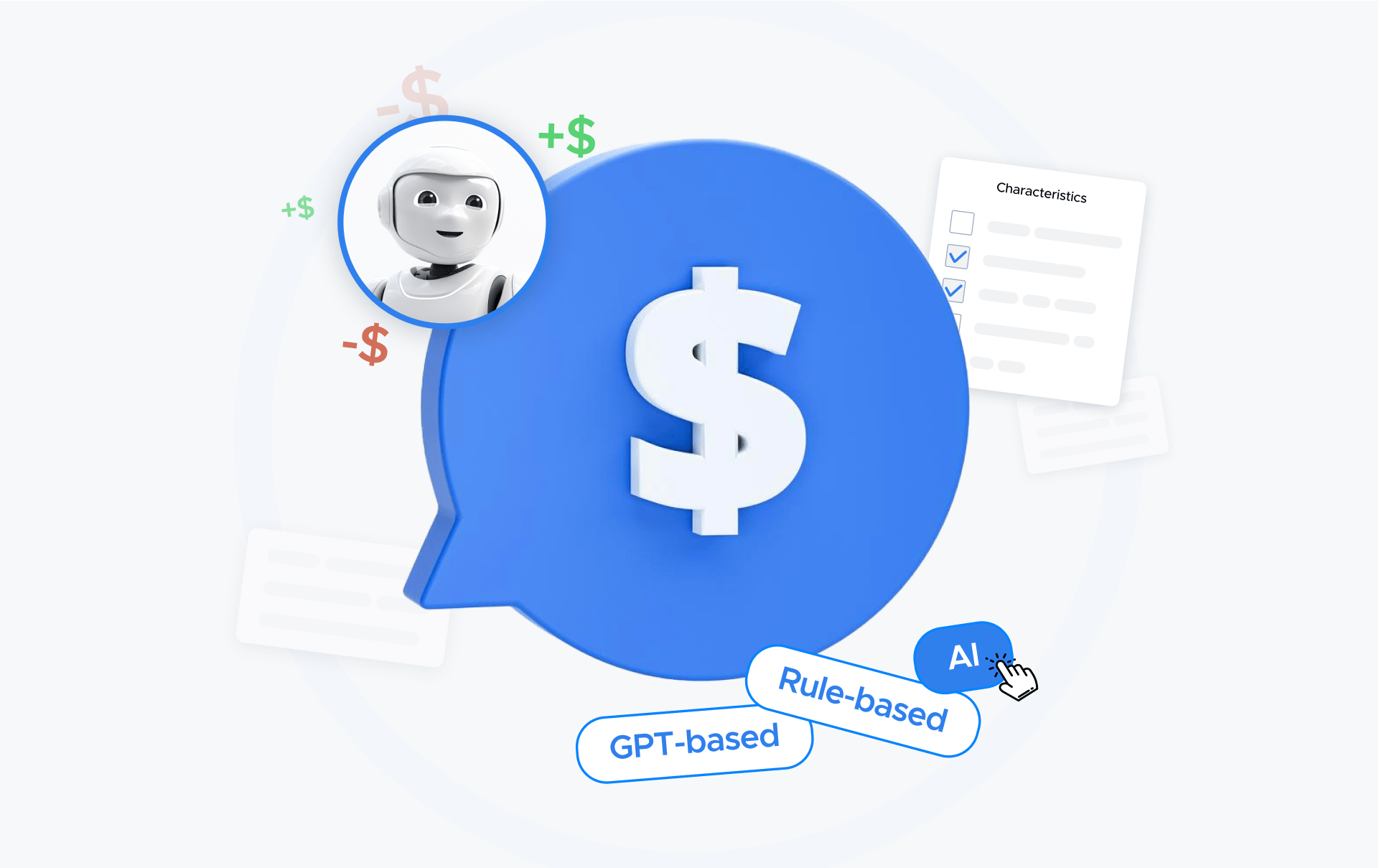How to Build a Website Bot From Scratch: 5 Steps to Consider
Here's an easy guide on how to build a website bot that converts, sells, and provides high ROI for your business.
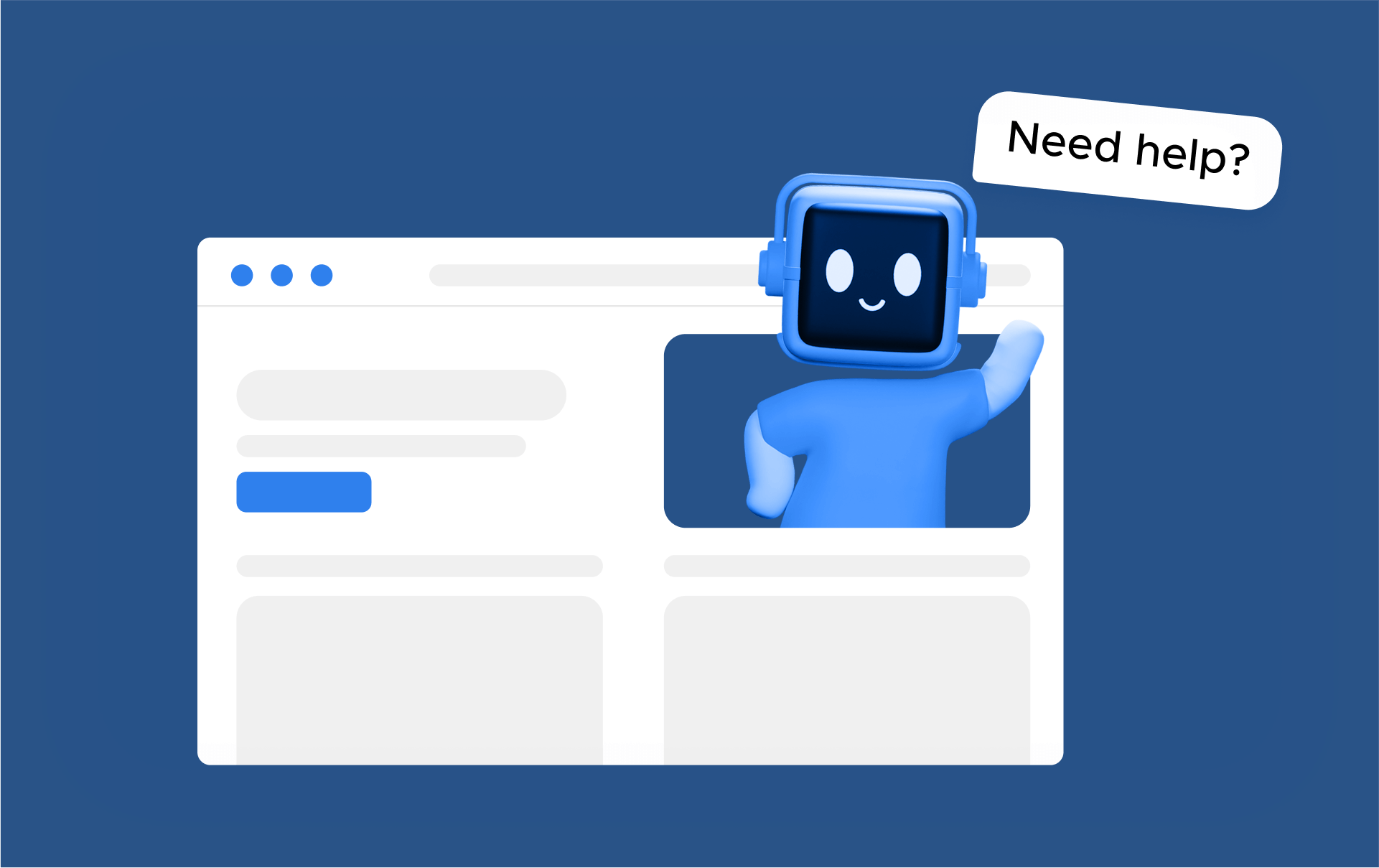
Imagine you are doing a Google search. Either you use a regular search or scrape Google results, you found a website on services or products you were craving for. You opened it, started reading all the headers, descriptions, and…
After 5 minutes, you still can’t get where their pricing is.
First thought?
Why is it so confusing?
Maybe you’ll continue your Internet surfing, maybe you even find the pricing and buy a product from that website. However, the feeling of irritation and disappointment will stay.
And for some people, it will be a reason for Exit.
It takes about 50 milliseconds (that’s 0.05 seconds) for users to form an opinion about your website that determines whether they like your site or not, whether they’ll stay or leave.
Chatbots play an important role in this decision. Even more, if implemented right, they can turn your website visitors into leads, then into customers, and eventually into brand ambassadors.
In our article, we will explore the topic of conversational marketing, how to make sure you are getting 100% out of your website chatbot, what possible use cases are, how to better engage visitors, and where to put chatbots except the Welcome page.
How can you use chatbots to boost your website performance?
Most customers (56%) expect to find what they’re looking for from a company in 3 clicks or less (Salesforce). Evenmore, they (72%) expect a deep understanding of their needs, reflected through personalized experiences (Salesforce).
One of the tools which achieves both requests is conversational marketing.
Conversational Marketing is helping companies bridge the gap from the physical to the digital world and create personal relationships at scale. As more brick and mortar retailers move their business online, Chat, SMS and chatbots are empowering marketers to deliver a curated experience that people thought could only exist via face to face engagement. Sara Varni, CMO
Briefly, it is a method of engaging with website visitors and converting leads via dialogue-driven activities. This style of inbound marketing puts a focus on interactions with the consumer, not simply one-way transmission by the brand.
Conversational marketing helps building trust, and one example of it are chatbots, specifically, website chatbots.
Unlike chatbots in Messenger, Viber or other social media that have different limitations, chatbots on websites can do completely everything you want.
Besides there are different integration you can have with a chatbot:
– CRM software ( e.g., Hubspot, Zoho, Salesforce, etc.),
– Calendar (Google Calendar, etc.)
– Payment systems (e.g., Stripe, PayPal, etc.),
– Maps (Google Maps, Apple Maps, etc.)
– Cloud storage tools (e.g., Dropbox, Google Drive, OneDrive, etc.),
– any other business software that your company is using
Another advantage is better user experience because you can change fonts, widget colors, shape of buttons, etc. that will align with your brand. You can search for relevant web design companies in Los Angeles to adjust the chatbot to brand design.
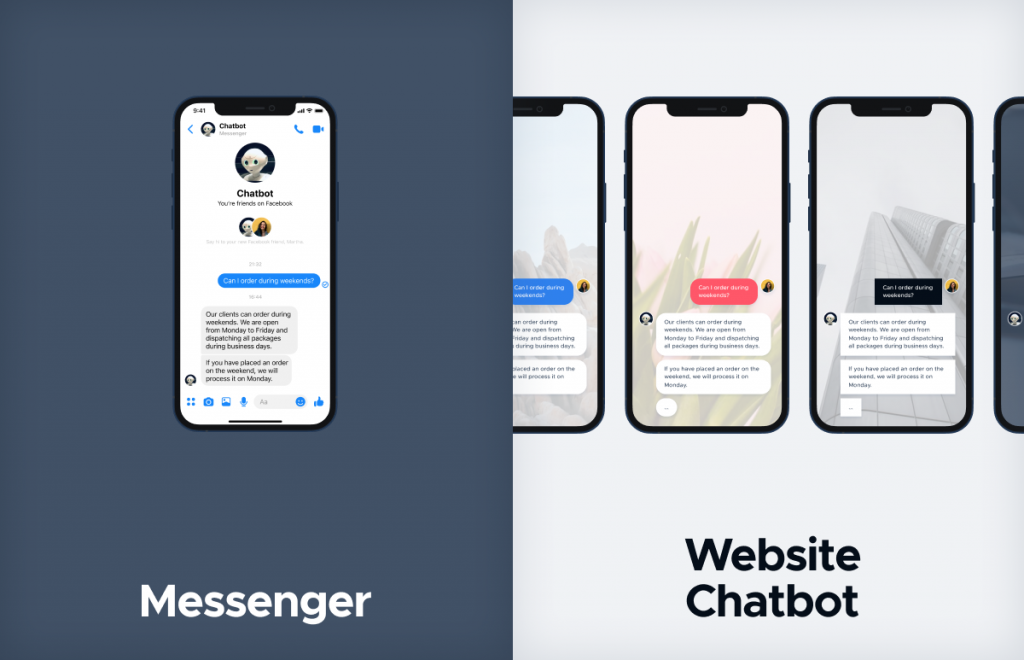
SUPPORT CASES
SUPPORT CASES
Upgrade subscription
Makes changes to orders
Pre-sales support
Post-sales support
Cancel orders
Converse visitors outside business hours
Guide customers to the right operator group
Create support tickets
Track packages
Answer payment queries
Answer frequent questions

83% of consumers said they would be more loyal to a brand who offers a chatbot for tasks like making an appointment or handling customer service inquiries (Mobile Marketer).
LEAD GENERATION CASES
LEAD GENERATION CASES
Book appointments and reservations
Convert visitors to sign-ups
Nurture leads
Onboard new visitors
Help with opening a website account
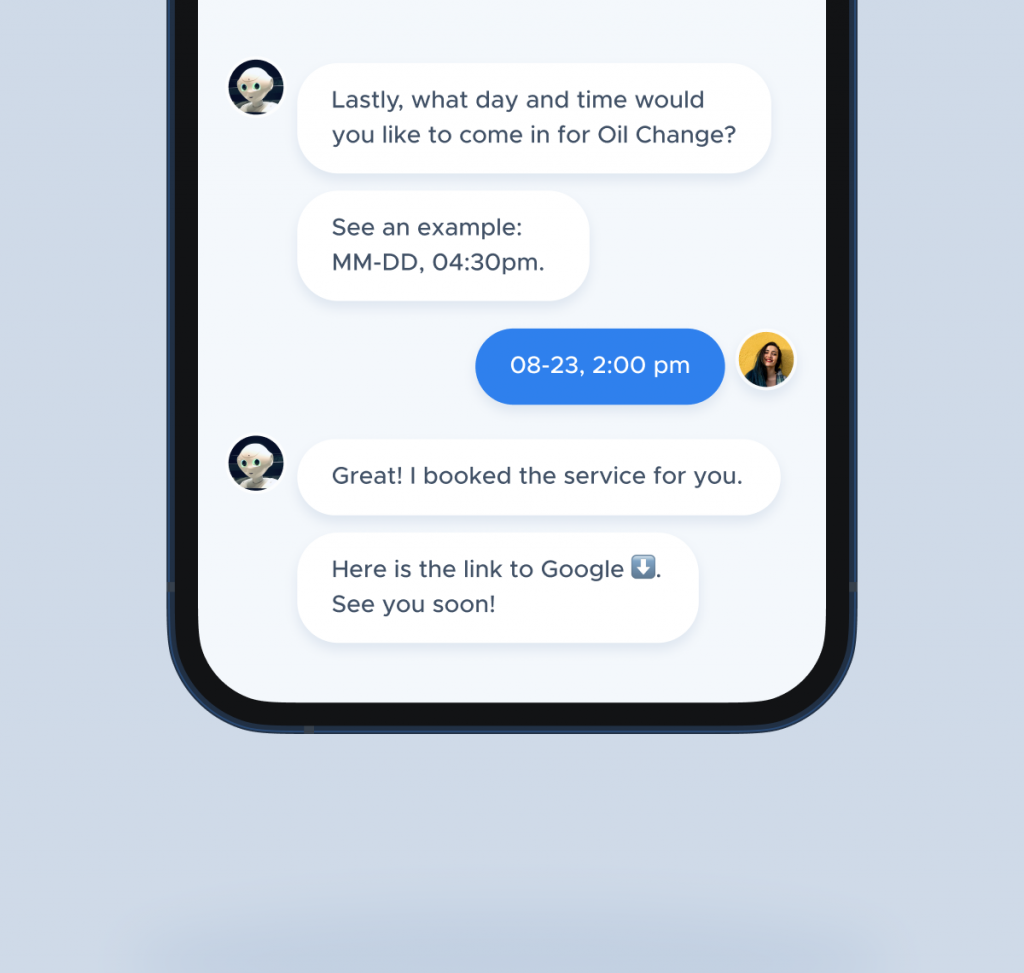
47% of consumers would be open to making a purchase completely from a chatbot (HubSpot).
ENGAGEMENT CASES
ENGAGEMENT CASES
Promote content offers, blog posts
Collect Surveys and Feedback
Drive website registrations
Communicate offers
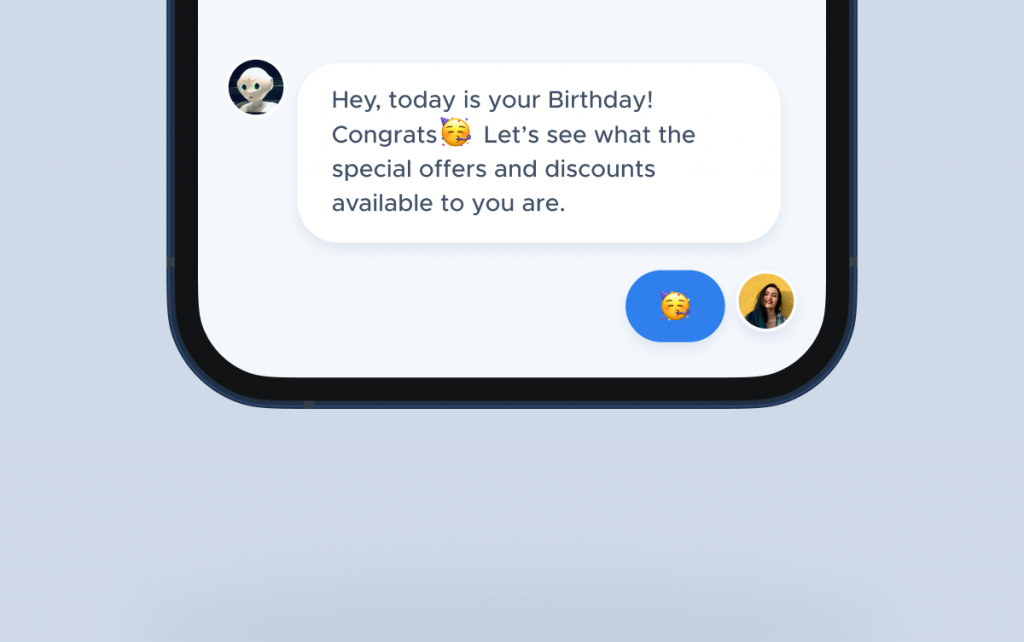
…and more.
After deciding what exactly a chatbot will do, the next crucial step is finding a place where it should (and better) be. The Welcome page is not always the best choice. Actually, if it’s well-designed, you don’t require any additional help there.
Well-designed chatbots on websites can be helpful to customers and drive greater conversion metrics than websites without bots. If the bot is just lead capture, I find them annoying, and I’m a huge bot lover. In the future, bots will understand the content being displayed on the page and enhance users’ experience.
Jared Jaskot, Legal AI and Chatbot Maker, founder of YoTengoBot
The only case when you need a chatbot, is to capture attention with a highly personalised trigger or a clear call to action you find the most relevant for your customers, like:

Don’t be focused on starting a conversation with anyone, instead focus more on starting conversations with the right people.
In general, a chatbot is needed for more complex processes, where confusion might arise, when visitors hesitate about what their next step should be, or where you constantly see a high bounce rate.
Like these:
- Demo signups and other sales-related pages
- Event pages
- Complex landing pages
- Free tools
- Product and feature pages related to product information/ features
- Pricing pages
- Contact us page
These are pages where additional questions could be, and a chatbot might, for example, help visitors decide which plan makes the most sense for them based on their budget and goals.
Ask what their problem is, and advise an article or free guide they can download.
Simplify complex forms so visitors won’t drop off.
And don’t forget about your sales team or the inbound strategy, so a chatbot can:
Qualify users by asking a sequence of questions.
Schedule a call with qualified leads directly in a chat.
Push lead scoring data to CRM.
Now, let's move on to the steps.
How to build a website bot:
- Define the automation areas
- Set the chatbot goals
- List integrations and languages
- Define the complexity of your chatbot
- Decide on an implementation solution
Step 1. Define the automation areas
Usually, the best areas for chatbots are client-facing processes that are repetitive. For example, customer service, technical support, sales processes like lead qualification and evaluation. A good fit are also HR and recruitment processes.
Let's say you've collected the data about popular customer requests and noticed that most of the interactions are about a delivery date. You can group in one category “Delivery info” requests like:
- “When will my parcel be delivered?”,
- “What is the delivery date?”,
- “When I will receive my order,” etc.
Collect the requests you're looking to automate with a chatbot.
Step 2. Set the chatbot goals
You need to understand the reason for implementing a chatbot. Stop for a second and ask yourself two questions:
- “Which problem would the chatbot solve?”
- “What will exactly a chatbot be doing?”
The best way to create a chatbot’s goal is to use SMART goals. A goal can be: “The chatbot should automate 30% of customer service requests about products and our policies in the first 3 months after implementation”.
Choose measurable metrics with more precise numbers that can be analyzed. For example: “By implementing the chatbot, we want to reduce average ticket resolution time from 4 minutes to 1 minute 10 seconds by April 2021".
Step 3. List integrations and languages
Take time to write down possible integrations for your chatbot and languages.
Why is it important at step 3? Every integration and language is subject to additional costs. Simply because before you choose a solution, you have to make sure it meets your requirements.
Some integrations you might need:
- CRM ( e.g., Hubspot, Zoho, Salesforce, etc.),
- Calendar (Google Calendar, etc.)
- Payment systems (e.g., Stripe, PayPal, etc.),
- Maps (Google Maps, Apple Maps, etc.)
- Cloud storage tools (e.g., Dropbox, Google Drive, OneDrive, etc.),
- any other business software that your company is using.
Same way, list the number of languages you need. That is very important since chatbot platforms usually charge higher for additional languages.
If you followed the previous steps, you should get a list with such bullet points:
-
- automation areas for the chatbot to take over;
- chatbot goals with automation % you expect to achieve / specific measurable target for a defined period
- integrations
- languages
Now, move on to the next step.
Step 4. Define the complexity of your chatbot
Since you already have the list of what you need from a chatbot, it's time to apply it to the technical level.
In simple words, how complex must your chatbot be to meet your chatbot goals and requirements?
There are three main types of chatbots:
- Rule-based: the simplest bots that use buttons with predefined options;
- Intellectually independent: bots based on Machine learning and trained to understand specific keywords and phrases to give the best reply to the user;
- AI-powered: bots that use Machine Learning, AI, and Natural Language Processing (NLP) to understand customer words with intent and are best for making conversations.
For example, you need a chatbot to automate order status requests. You've set a specific goal for a chatbot to estimate its success – automate 30% of incoming chats about the order status.
- if you implement a rule-based chatbot, it will provide buttons for users to choose from. For example, when entering the chat, the user will see a button "order status". Once clicked, the chatbot will guide with simple instructions on how a user can get status. Note: such chatbot will not be able to understand the user input, if for example, the user enters something different than a button or whatever the bot requested.
- if you choose an AI chatbot, it will be able to lead a conversation with a user. In this case, if the user enters something like "where is my order", with training, a chatbot will provide a relevant response. Such chatbots are more expensive but are a more natural way for people to get information, even when it comes to bots.
Take your time to review the list you've already collected. How various are user inputs on the topics you want to automate? How easy it is to perform an action you need from a user? What is the overall project budget that will allow you to achieve the expected result?
If you're interested in how much a chatbot costs, check out our guide here: Chatbot Pricing: How to Calculate the Chatbot Price
Step 5: Decide on implementation solution
The most popular choices are a chatbot platform or a chatbot development company.
- The platform’s features and capabilities. Make sure the platform offers the features and functionality that you need to build and deploy your chatbot.
- The platform’s integrations. Consider whether the platform can integrate with other tools and systems that you use, such as customer relationship management (CRM) software or messaging apps.
- The platform’s pricing. Compare the pricing plans of different chatbot platforms to find one that fits your budget.
- The platform’s user experience. Try out the platform yourself to see if it is easy to use and intuitive.
- The platform’s customer support. Check if the platform offers support and resources, such as documentation and tutorials, to help you get started with building your chatbot.
In addition to these factors, it’s also a good idea to read reviews and ask for recommendations from other users or businesses that have experience with chatbot platforms.
When picking a chatbot vendor, there are several things to consider, such as the following:
- The vendor’s experience and expertise. Look for a vendor that has experience creating chatbots for businesses or organizations similar to yours.
- The vendor’s portfolio and case studies. Ask for examples of chatbots that the vendor has created and see if they are relevant to your needs and industry.
- The vendor’s pricing and contract terms. Compare the pricing and contract terms of different vendors to find one that fits your budget and business needs.
- The vendor’s communication and collaboration. Make sure the vendor is easy to communicate with and open to working with you to create a chatbot that meets your requirements and expectations.
- The vendor’s support and maintenance. Ask about the vendor’s support and maintenance policies and see if they offer ongoing support and updates for the chatbot after it is deployed.
- It’s also a good idea to ask for references from other businesses or organizations that have worked with the vendor and to read online reviews to get a sense of the vendor’s reputation and quality of service.
However, the easiest way to pick the right solution is to consult a chatbot development company.
BotsCrew has developed over 100 successful chatbots. Feel free to reach out to us by booking a call – we'll help you find the right fit!




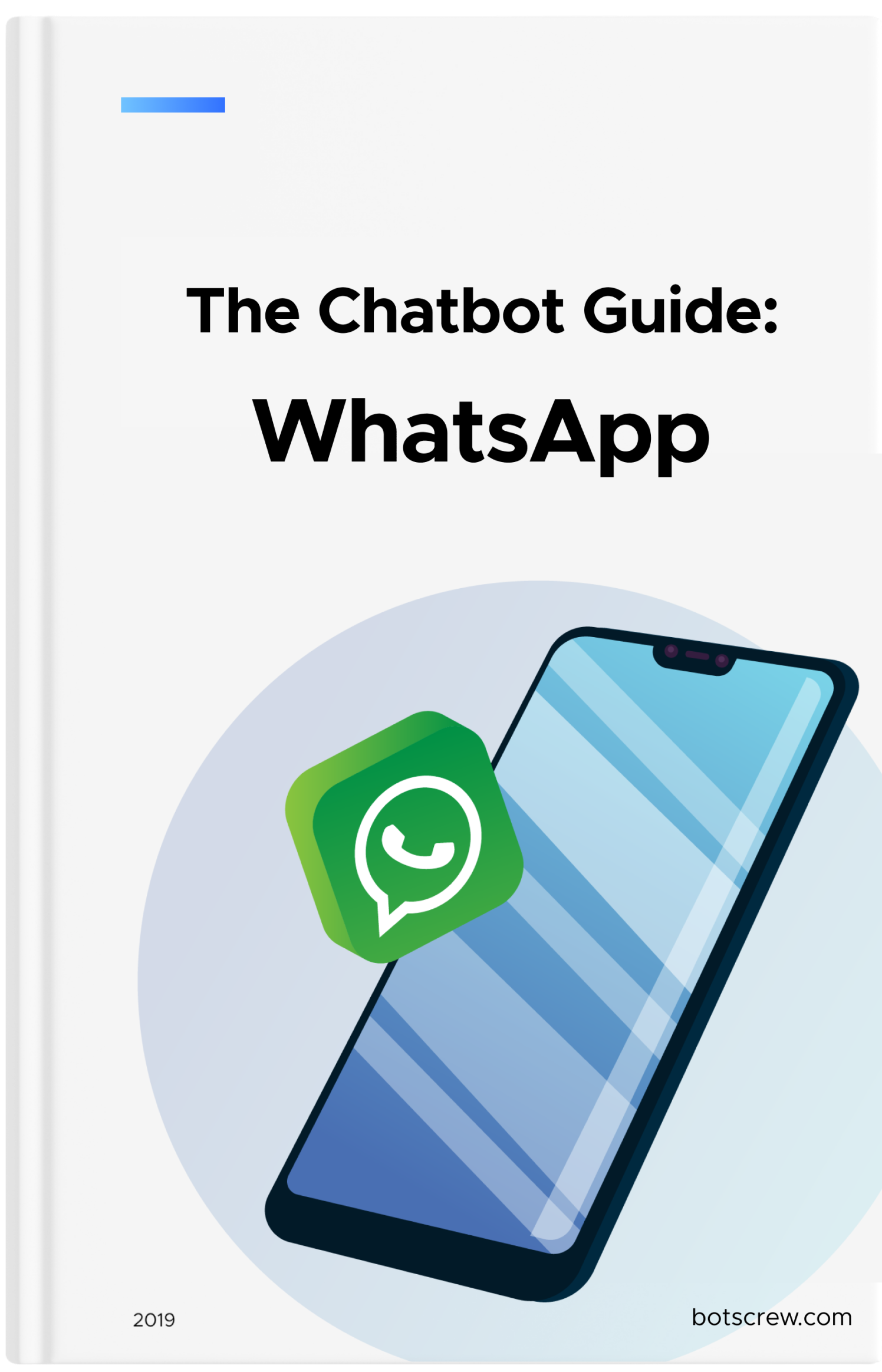


![The Best Chatbot Platforms for Business [2025 Edition]](https://botscrew.com/wp-content/uploads/2018/07/photo-1522071820081-009f0129c71c-1.jpeg)
